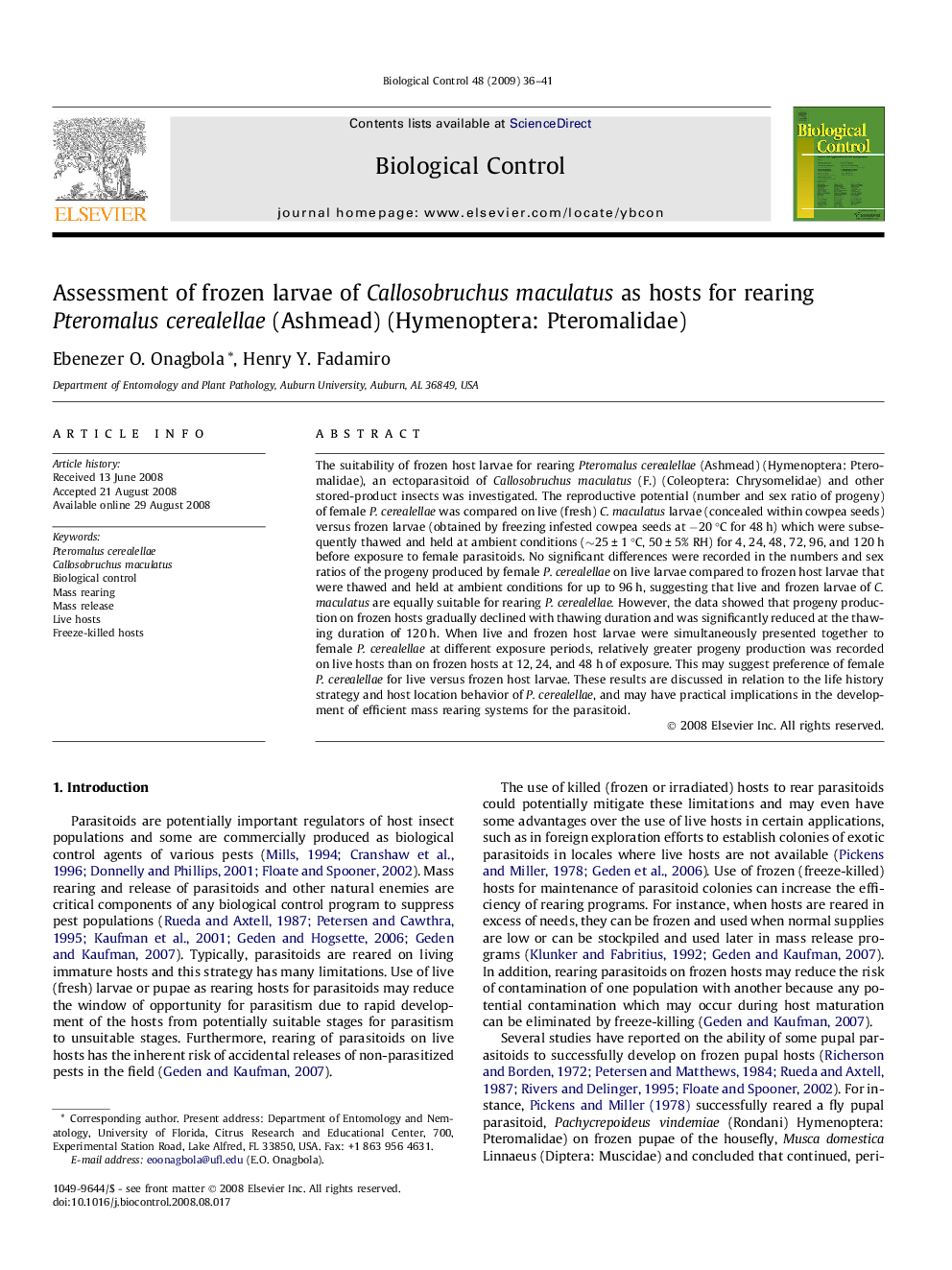| Article ID | Journal | Published Year | Pages | File Type |
|---|---|---|---|---|
| 4504659 | Biological Control | 2009 | 6 Pages |
The suitability of frozen host larvae for rearing Pteromalus cerealellae (Ashmead) (Hymenoptera: Pteromalidae), an ectoparasitoid of Callosobruchus maculatus (F.) (Coleoptera: Chrysomelidae) and other stored-product insects was investigated. The reproductive potential (number and sex ratio of progeny) of female P. cerealellae was compared on live (fresh) C. maculatus larvae (concealed within cowpea seeds) versus frozen larvae (obtained by freezing infested cowpea seeds at −20 °C for 48 h) which were subsequently thawed and held at ambient conditions (∼25 ± 1 °C, 50 ± 5% RH) for 4, 24, 48, 72, 96, and 120 h before exposure to female parasitoids. No significant differences were recorded in the numbers and sex ratios of the progeny produced by female P. cerealellae on live larvae compared to frozen host larvae that were thawed and held at ambient conditions for up to 96 h, suggesting that live and frozen larvae of C. maculatus are equally suitable for rearing P. cerealellae. However, the data showed that progeny production on frozen hosts gradually declined with thawing duration and was significantly reduced at the thawing duration of 120 h. When live and frozen host larvae were simultaneously presented together to female P. cerealellae at different exposure periods, relatively greater progeny production was recorded on live hosts than on frozen hosts at 12, 24, and 48 h of exposure. This may suggest preference of female P. cerealellae for live versus frozen host larvae. These results are discussed in relation to the life history strategy and host location behavior of P. cerealellae, and may have practical implications in the development of efficient mass rearing systems for the parasitoid.
